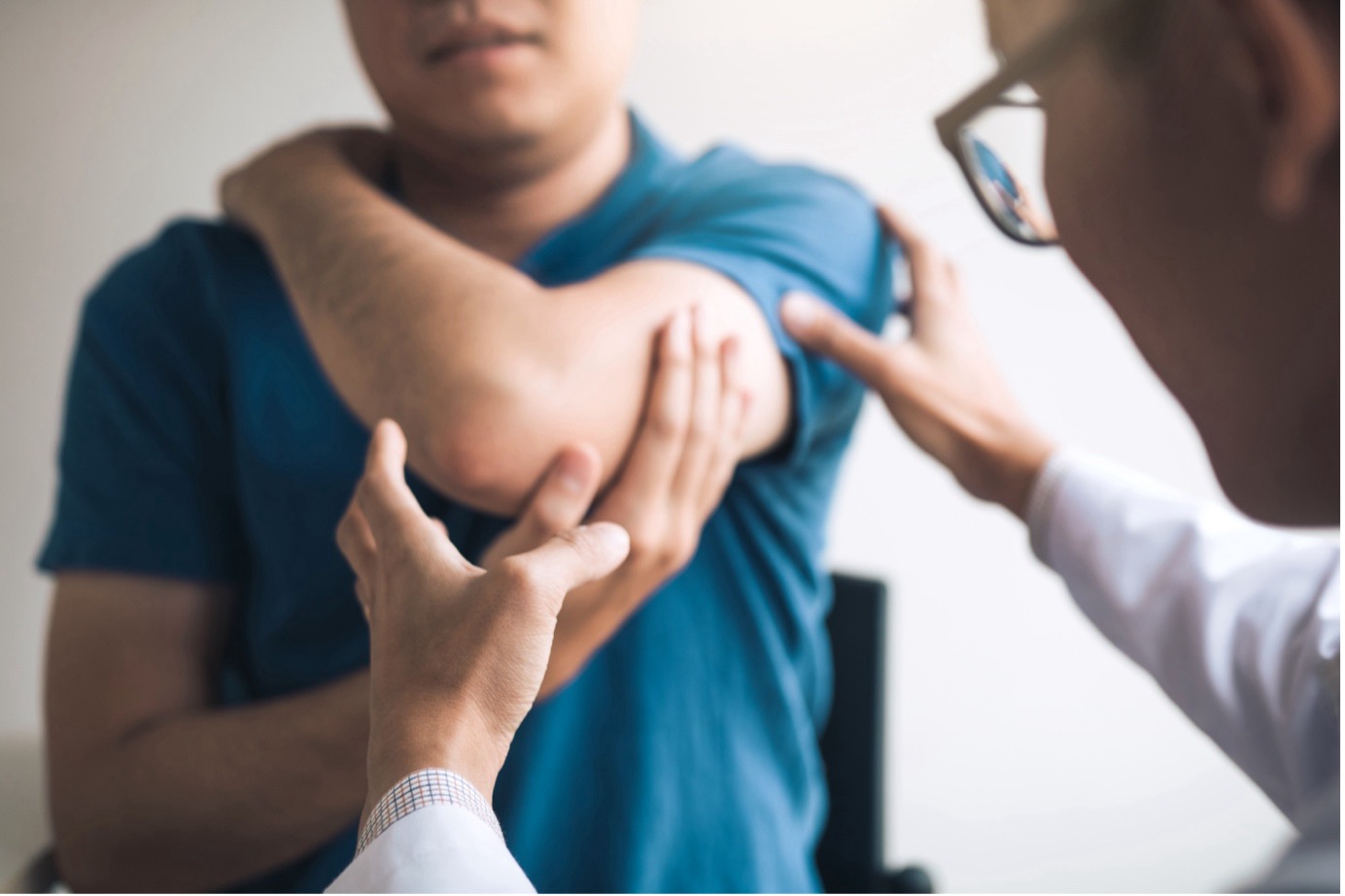
How to recognise a radial head fracture
Radial head fractures are among some of the most common elbow injuries experienced by people of all ages. Located between the upper arm and the forearm, the radial head forms an important part of the elbow joint. Its longitudinal rotation allows us to move the forearm inwards and outwards, which is essential to many activities and everyday tasks.
This blog contains all the information you need to know to recognise a radial head fracture, along with details on why it’s important to become aware of elbow fractures and get treatment early.
What can cause a radial head fracture?
The radial head rotates inside the radial-capitellar joint to allow for a range of movement in the forearm. The joint is surrounded by a mass of ligaments and a thick capsule. Fractures to this bone can therefore result in an injury to other areas of the joint, for example a soft tissue injury to the elbow.
The primary cause of a radial head fracture is due to excessive force being exerted on the arm. The most common example being through a fall. When you put out your arm to cushion yourself from a fall, the impact travels up the arm from the wrist to the shoulder. As the force progresses it can cause bones to break under the increased weight, resulting in fractures. The radial head is one of the most common places a fracture can occur. Forces that directly impact the elbow, such as from a vehicle collision, can also cause radial head fractures. In the case of severe injuries like this, the ALIGN® Radial Head Replacement system may be recommended for use.
What are the potential complications of a radial head fracture?
Radial head fractures are classified according to the Mason classification, which separates different types of fracture by their severity. Each fracture type therefore has different potential complications associated with it. There are four kinds of radial head fractures, which are:
- Type 1 – Bones are displaced by a distance of less than 2mm or not at all.
- Type 2 – The fracture is displaced by more than 2mm.
- Type 3 – A comminuted fracture where the bone fractures into three or more separate pieces.
- Type 4 – A radial head fracture that is accompanied by dislocation of the elbow joint.
Any radial head fracture that’s left untreated can lead to the development of complications later in life, often due to the elbow joint healing incorrectly. This includes:
- Chronic instability: The elbow joint can become unstable due to suboptimal healing of the tendons and ligaments in the joint.
- Limited range of movement: Due to the key role of the radial head in allowing forearm motion, poor healing can cause bone surface imperfections that limit mobility. Trapped bone fragments can also disrupt movement at the joint.
- Bone death: Radial head fractures, particularly comminuted ones, can prevent blood vessels from reaching the bone. This can result in the necrosis of the radial head.
- Arthritis: Fractures resulting in cartilage wear can lead to the early onset of arthritis.
Clinical publications have shown that replacement radial head prostheses can be effective in relieving the above symptoms, so long as it aligns with the forearm axis of rotation. At LEDA, we understand that matching implants to patient anatomy is crucial to the success of orthopaedic procedures.
Signs of a radial head fracture
There can be many indications that you have suffered a radial head fracture, which can manifest both visually and as bodily sensations. These include:
- Pain on the outside of the elbow that emanates to the hand.
- Swelling and redness around the elbow joint.
- Difficulty bending or straightening the arm at the elbow, accompanied by pain.
Those who suspect they may have a radial head fracture can get confirmation by lightly triggering some of the symptoms above through pressing on the radial head. Turning the forearm inwards and outwards, as well as bending the arm, can cause extreme pain so be careful. Swelling is typically evidence of ligament damage caused by a radial head fracture. Other injuries associated with a radial head fracture are to the collateral ligaments, soft connective tissue, and carpal bones. As such, you will likely have these diagnosed at the same time when seeing a healthcare professional.
While some radial head fractures can heal without intervention, orthopaedic treatment may be advised to avoid the complications detailed above. Modern options we provide include the Proximal Ulna Plate, PROTEAN® Fragment Plate System, and the IJS Elbow system.
Radial head replacement treatment support
In cases where there is significant damage to the radial head in the form of a fracture, it is often best to have radial head replacement surgery. LEDA Orthopaedics have been working at the forefront of the orthopaedics implant industry for more than 10 years. As such, we stock devices for use in a wide range of surgical procedures, from complex treatments to modern solutions for regular injuries such as radial head fractures. Contact us today if you need more information on our products and what we can do for your institution.